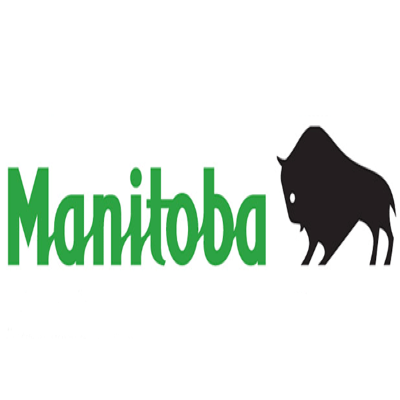Municipality
Type of resources
Topics
Keywords
Contact for the resource
Provided by
Years
Formats
Representation types
Update frequencies
status
Service types
-
A census metropolitan area (CMA) or a census agglomeration (CA) is formed by one or more adjacent municipalities centred on a population centre (known as the core). A CMA must have a total population of at least 100,000 of which 50,000 or more must live in the core based on adjusted data from the previous Census of Population. A CA must have a core population of at least 10,000 also based on data from the previous Census of Population Program. To be included in the CMA or CA, other adjacent municipalities must have a high degree of integration with the core, as measured by commuting flows derived from data on place of work from the previous Census. If the population of the core of a CA falls below 10,000, the CA is retired from the next census. However, once an area becomes a CMA, it is retained as a CMA even if its total population declines below 100,000 or the population of its core falls below 50,000. All areas inside the CMA or CA that are not population centres are rural areas. When a CA has a core of at least 50,000, based on data from the previous Census of Population, it is subdivided into census tracts. Census tracts are maintained for the CA even if the population of the core subsequently falls below 50,000. All CMAs are subdivided into census tracts. The terms 'population centre,' 'core,' 'fringe' and 'rural area' replace the terms 'urban area,' 'urban core,' 'urban fringe' and 'rural fringe' since the 2011 Census. The type of population centre is determined by the relationship between the population centre and the structure of the census metropolitan areas (CMA) or census agglomerations (CA). Possible types within a CMA or CA are as follows: core, secondary core, fringe and rural area.
-

Polygons of the administrative boundaries of the City of Montreal, its boroughs, as well as related cities in the agglomeration of Montreal. The administrative boundaries are a compilation of the various technical descriptions and plans that are filed in the Registry of the Surveyor General of Quebec. They are shared for information purposes and are subject to change.**This third party metadata element was translated using an automated translation tool (Amazon Translate).**
-

Municipalities with established populations of _Ixodes scapularis_ ticks (blacklegged ticks) are municipalities where tick populations reproduce and survive from one year to the next. This indicator makes it possible to identify municipalities where their presence suggests a higher risk of tick bites and the transmission of diseases, such as Lyme disease, anaplasmosis or babesiosis. In other municipalities without an established population, the presence of ticks is possible, as ticks can be carried there by birds or terrestrial mammals. The data used to build this indicator come from passive and active acarological surveillance. Active and passive surveillance data were accumulated and then aggregated by municipality and by year. This made it possible to determine whether an established tick population is identified by the indicator at least 1 year over the study period. The climate zone favorable to the establishment of ticks _Ixodes scapularis_ highlights the areas where the estimated temperature would be favorable to the establishment of tick populations in Quebec. An area where the climate is favorable for the establishment of tick populations is defined by an annual number of degree-days above 0°C (DJ0). This indicator was calculated for the historical surveys 2009-2017 (current distribution) and for the horizons of 2030, 2050 and 2080 according to the climate scenarios SSP2-4.5 and SSP3-7.0 (future distribution). The DJ0 are calculated by calculating the difference between the daily mean temperature and the 0°C reference temperature used in this situation, then interpolating on a 10km x 10km grid. The final DJ0 value used is the 50th percentile. For more information on municipalities with established populations of _Ixodes scapularis_ ticks or the climatic zones favorable to their establishment you can consult the * [Methodological Report] ( https://www.inspq.qc.ca/publications/3483) * OR the * [INSPQ website, Current and future distribution maps of zoonoses in Quebec] (https://www.inspq.qc.ca/zoonoses/cartes) *.**This third party metadata element was translated using an automated translation tool (Amazon Translate).**
-

Annual number of business incorporations in British Columbia by development region, regional district and municipality.
-

Administrative boundaries of the sectors of the city of Lévis. The sectors correspond to the boundaries of the former municipalities prior to the 2001 merger.**This third party metadata element was translated using an automated translation tool (Amazon Translate).**
-

The layers of administrative divisions offered at the scales of 1/20,000 and 1/100,000 allow the location of boundaries for the following components: * Boroughs and agglomerations; * Municipalities, unorganized territories and indigenous territories; * Administrative regions, metropolitan communities, and MRCs; * The international border, the interprovincial borders as well as the Québec—Newfoundland and Labrador border. For the 1/100,000 scale version, the cut-off data originally compiled at the scale of 1/20,000 is adjusted to the corresponding planimetric components at the scale of 1/100,000.**This third party metadata element was translated using an automated translation tool (Amazon Translate).**
-

The purpose of this layer is to provide end users with a spatial representation of the Zones in adopted Zoning bylaws and their consolidated amendments in Manitoba. This layer is intended to be a source of data delivery as well as usage in situ. This dataset is comprised of boundary geometry representing the zones in the Zoning bylaws (as defined in The Planning Act) in force and effect within the Province of Manitoba. Spatial referencing of the zones is based on the best available land parcel data for each municipality. Where available, land parcel data based on registered survey plans and ground control coordinates was used. Otherwise, the reference grid maintained by Manitoba Sustainable Development was used. The delineation of the boundaries is set by the bylaw establishing or amending the boundary of each zone. Dataset content is subject to: Ongoing changes in zone boundaries which are determined by amendments to adopted Zoning bylaws or the adoption of new Zoning bylaws. Ongoing development and maintenance of the land parcel datasets. Improvements to the land parcel data are used to improve the positional accuracy of the zone polygons. As of the publication date of this dataset, the following known issues remain: For zone boundaries that include water boundaries, the water boundary that best reflects the intended zone boundary was used. In some instances, road allowances on a municipal boundary are included in both of the adjoining municipalities. Please visit the Manitoba Municipal Relations website for more information at www.gov.mb.ca/mr. The Zoning bylaw data reflects the most current zones at the time of export and was uploaded to Manitoba Maps as a feature layer. Fields Included: OBJECTID: Sequential unique whole numbers that are automatically generated ZBL: Number assigned by municipality to identify a specific bylaw ZBL_A: Number assigned to a bylaw that amends an existing zoning bylaw MUNI_NO: Manitoba municipality identifier number MUNI_NAME: Name of municipality ZONE: Letter code that corresponds with Zone Name as stating in the zoning bylaw ZONE_NAME: Name of Zone as stated in bylaw ZONE_CATEGORY: Zone category as interpreted by Municipal Relations AREA: Area of each polygon expressed in acres PLANNINGREGION: Area of responsibility for a Community and Regional Planning Branch (In the Department of Municipal Relations) office PLANNINGDISTRICT: Name of the Planning District to which the municipality belongs if applicable MUNI_NAME_2014: Name of municipality before 2015 Amalgamations MUNI_NO_2014: Manitoba municipality identifier number before 2015 Amalgamations AMENDMENT_DESCRIPTION: Summary of change by the amending bylaw stating the zone before and after an amendment (e.g. RR to MG)
-

The Land Use and Development web application provides users with a digital representation of land use in Manitoba municipalities, including property assessment boundaries, designated areas in adopted development plans, and zoning boundaries. It also enables users to perform planning analyses based on these data. Key Features: Perform detailed planning analyses The Buffer Property tool finds a property and list all properties that are within a given buffer distance around it. Users can download the list as a csv. The Planning Analysis widget finds all Development Plan Designation, Zoning Bylaw and Property Assessment features underlying a given point, line or polygon. Users can download the list as a csv. Easily swipe between designated areas and zoning boundaries to reference against each other. Data Utilization Display, search, select, and derive attributes for property parcels, zoning and designations. Map Export Export simple maps of specific areas for further use. Elevation profiles note: Users can generate elevation profiles based on user input using Esri-curated elevation data. Note that the level of detail and accuracy may vary by location.This application is designed to facilitate detailed and efficient land use and development planning.
-

The purpose is to provide end users with a digital data representing the boundaries of incorporated municipalities in Manitoba. It also enables users of Manitoba spatial data to identify which municipality selected features fall within. This dataset is comprised of boundary geometry for all of the incorporated municipalities and Northern Affairs Communities within the Province of Manitoba. The boundaries in this dataset represent the descriptions set forth in the Municipal Status and Boundaries Regulation (567/88R) and subsequent amendments, and regulations under The Northern Affairs Act. The geospatial referencing of the Municipal Boundaries is based on the best available land parcel data for each municipality and Northern Affairs Community. Where available, cadastral data based on registered survey plans was used. Otherwise, the Manitoba Property Assessment Information dataset produced by Manitoba Municipal Relations was used. The delineation of the boundaries was established according to the regulation establishing or amending the boundary of a municipality or Northern Affairs Community. Dataset content is subject to: Ongoing changes in municipal status and boundary and Northern Affairs Community boundary alterations that are generated through annexations, amalgamations, dissolutions or formations, all of which are approved by regulations made under The Municipal Act (for incorporated municipalities) and The Northern Affairs Act (for Northern Affairs Communities). This dataset content is current to the most recent effective date of any such regulation amendment. Ongoing development and maintenance of the land parcel datasets. Improvements to the cadastral data are used to improve the positional accuracy of the municipal boundary polygons. As of the publication date of this dataset the following known issues remain: For municipal boundaries and Northern Affairs Communities that include water boundaries, such as in the Lake Winnipeg and Lake Manitoba areas the water boundary portion that best reflects the municipal boundary was used. In some instances, road allowances on a municipal boundary are included in both of the adjoining municipalities. Please visit the Manitoba Municipal Relations website for more information www.gov.mb.ca/mr/land_use_dev/index.html. The Manitoba Municipal Boundaries data reflects the status of municipal boundaries and Northern Affairs Communities at the time of export and was uploaded to Manitoba Maps as a feature layer. Fields Included: OBJECTID: Sequential unique whole numbers that are automatically generated MUNI_NO: Manitoba municipality identifier number MUNI_NAME: Legal name of municipality MUNI_TYPE: Type of municipality MUNI_LIST_NAME: Name of municipality suitable for alphabetical list MUNI_LIST_NAME_WITH_TYPE: Name of municipality suitable for alphabetical list including type
-

Boundary geometry and summary assessment data for all of the assessed property within the Province of Manitoba. Please visit the Manitoba Property Assessment website for more information www.gov.mb.ca/assessment Boundary geometry for all of the assessed property within the Province of Manitoba. Please visit the Manitoba Property Assessment website for more information www.gov.mb.ca/assessment. The purpose is to provide end users with a digital map of Manitoba's property assessment boundaries and summary assessment data. This data layer is suitable for GIS georeferencing. The Manitoba Property Assessment Information data reflects the most current mapping data available and was originally uploaded to Manitoba Maps as a feature layer on December 23, 2016. Fields Included: OBJECTID: Sequential unique whole numbers that are automatically generated ROLL_NO: Identify property within a municipality ROLL_NO_TXT: Identify property within a municipality. Formatted with 3 decimals PROPERTY_ADDRESS: Civic address if the property has one. Otherwise short legal description-section/township/range or plan MUNI_NO: Manitoba municipality identifier number MUNICIPALITY: Manitoba municipality identifier number and legal name of municipality MUNI_NAME_WITH_TYP: Name of municipality suitable for alphabetical list including type ASMT_ROLL: Tax year and assessment roll version (Preliminary, Final, Tax) DWELLING_UNITS: Number of dwelling units on the property FRONTAGE_OR_AREA: size of property in either acres or feet of frontage TOTAL_VALUE: Assessed value of property as of tax year and assessment roll version
 Arctic SDI catalogue
Arctic SDI catalogue